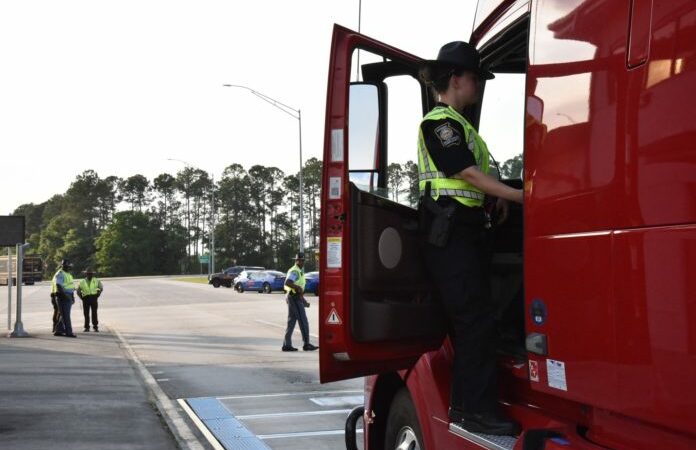This year’s Commercial Vehicle Safety Alliance (CVSA) International Roadcheck enforcement effort is approaching fast — here’s what you need to know.
This year, International Roadcheck will take place May 17 — 19 at weigh and inspection stations, on roving patrols, and at temporary inspection sites throughout Canada, Mexico and the U.S.
Each year, the CVSA selects an area of emphasis for the 72 hour Roadcheck campaign. Last year, inspectors focused on Hours of Service violations and lighting violations.
This year, the focus will be on wheel ends.
According to the CVSA, violations involving wheel end components historically account for about one quarter of the vehicle out-of-service violations discovered during International Roadcheck, and past International Roadcheck data routinely found wheel end components in the top 10 of vehicle violations.
During inspection of wheel ends on a commercial motor vehicle, inspectors will:
- Check for cracks or unseated locking rings, studs or clamps.
- Check for bent, cracked or broken rims on the inside and outside wheel rims.
- Check for loose, broken, missing or damaged wheel fasteners and elongated stud holes.
- Check spoke wheels for cracks across spokes and in the web area or slippage in the clamp areas.
- Check the hub for lubricant leaks, missing caps or plugs.
- Check the inner wheel seal for leaks.
- Check the tire and valve stem for leaks.
- Check for proper inflation, cuts and bulges on all tires, including the inside tire on a dual set.
- Check for regrooved tires on steering axle.
- Check tread wear and measure major tread groove depth.
- Inspect the sidewall for improper repairs, such as tire plugs.
- Check for exposed fabric or cord.
- Check for tire contact with any part of the vehicle.
- Check for markings on the tire that would exclude its use on a steering axle.
- Check for debris between the tires.
- Check for tires touching one another or any part of the vehicle.
Four Possible Outcomes of a Level I or V Inspection
During Roadcheck, most drivers will undergo a Level I Inspection — a 37-step process to confirm compliance with driver operating requirements and vehicle mechanical fitness. Inspectors can also choose to conduct the Level II Walk-Around Driver/Vehicle Inspection, Level III Driver/Credential/Administrative Inspection or Level V Vehicle-Only Inspection.
If you are selected to undergo a Level I or V inspection, there are four things that can happen following the completion of the inspection:
- Vehicle passes inspection with no violations – If no violations are found, a CVSA decal may be applied to the vehicle, indicating the vehicle successfully passed inspection. In general, vehicles with decals are not re-inspected during the three-month period during which the decal is valid.
- Violations are found, but they are not critical vehicle inspection item violations – When an inspector identifies vehicle violations, but they are not critical vehicle inspection item violations, the inspector will note those violations on the inspection report and the vehicle will be permitted to continue. Vehicles without critical vehicle inspection item violations are eligible to receive a CVSA decal. However, a decal will not be issued if violations are present on the rear impact guard.
- Violations of critical vehicle inspection items are found, but they are not out-of-service conditions – When an inspector identifies a critical vehicle inspection item violation, the inspector will note those violations on the inspection report and the vehicle will be permitted to continue. Vehicles with critical vehicle inspection item violations are not eligible to receive a CVSA decal.
- Out-of-service violations are discovered – If critical vehicle inspection item violations are found and the condition is identified in the North American Standard Out-of-Service Criteria, the inspector will render the vehicle out of service, which means the vehicle cannot be operated until the identified violations have been repaired.
“We want every vehicle on our roadways to be in proper working order for the safety of the driver operating that vehicle and everyone traveling on our roadways,” said CVSA President Capt. John Broers with the South Dakota Highway Patrol.
International Roadcheck is the largest targeted enforcement program on commercial motor vehicles in the world, with nearly 15 trucks or buses inspected, on average, every minute across North America during a 72-hour period.
Since its inception in 1988, roadside inspections conducted during International Roadcheck have numbered more than 1.4 million. Roadcheck also provides an opportunity to educate industry and the general public about the importance of safe commercial vehicle operations and the roadside inspection program.


